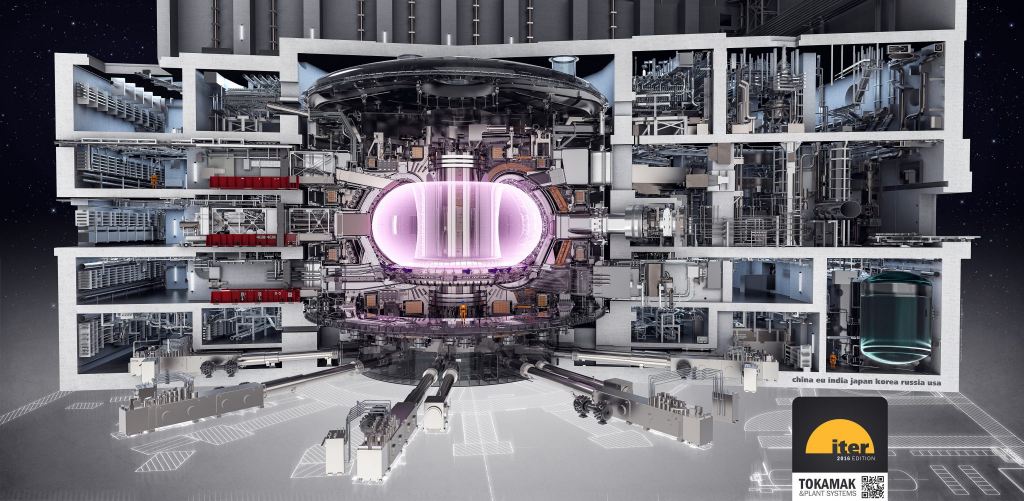
Nuclear power is a controversial topic. It’s a carbon-free way of producing electricity, but safety concerns, as well as waste disposal, ignite the discussion around it.
However debatable, last February the European Commission included nuclear power in the taxonomy of green energy sources. In other words, nuclear power investments will be supported and are considered “transitional activities contributing to climate change mitigation.”
Therefore, many countries within the Union started thinking about building – or reopening – nuclear reactors. Setting up a nuclear plant doesn’t happen overnight though. Considering all stages involved, it can take up to 12 years to start operating a new one. Therefore, not fast enough to replace Russian gas.
To reduce these times, an option could be building Small Modular Reactors – SMRs. Also dubbed as advanced reactors, they have up to 300 MVh of power capacity – about a third of conventional reactors. What are the pros and cons of this solution?
Quick facts about Small Modular Reactors
Reactors are the units within a nuclear power plant harnessing nuclear reactions. In a nutshell, nuclear energy is a form of energy released from the atom’s nucleus – the core. This energy can be generated in two ways: splitting the atom into parts – fission – or fusion of atomic nuclei together. Current power plants work with the fission method, while the fusion one is still being researched.
Uranium is the fuel used for generating fission. It comes in pellets and as the atom splits, it releases particles that trigger other atoms to split, hence resulting in a chain reaction. Such a reaction generates heat, warming the cooling agent – water, liquid metal, or molten salt. The cooling agent then produces steam, used for powering turbines and engines to create electricity. In brief, that’s what happens inside a nuclear power plant and what it’s replicated – on a smaller scale – in SMRs too. Reactors work 24 hours a day, seven days a week, making them more reliable than renewables.
A small reactor has up to 300 MVh of power capacity – roughly a third of a conventional one.
Modular means that components can be factory-assembled and transported to the plant location to be installed. This results in cheaper costs than the ones related to bigger units and in shorter construction time.
Clean energy in remote areas
The main pros of Small Modular Reactors are related to their design. Their size allows to install them into or off the existing grid, they could provide electricity for remote areas. In particular, this applies to microreactors – a subset of SMRs designed to generate up to 10MW – which could deliver energy to inaccessible regions. Furthermore, they could serve as a backup. They could also be a solution to revive brownfields – such as decommissioned coal mines.
More safety, less fuel
Smaller dimension also means simpler and safer power plants. SMRs rely on passive systems – physical phenomena such as gravity, natural circulation, and convection – that intervene to shut down the systems. Besides, Small Modular Reactors operate at lower power. For these reasons, safety increases, reducing the chances of releasing unsafe radioactivity in the surrounding environment. In addition to that, SMRs require less fuel. Some of them can go on for thirty years on one tank up.

Neutrons leak
The more compact design comes with disadvantages too. According to research, SMRs could produce up to 30 times more nuclear waste than traditional ones. This is why smaller units lose much more neutrons generated by the chain reaction – because the unit it’s smaller. Graphite or steel reflectors can contain leakages. However, these reflectors also absorb neutrons, which become radioactive thus adding up to the nuclear’s waste stream.

Small Modular Reactors produce more radioactive fuel
Another problem comes with the fuel itself. When mined, uranium contains less than 1 percent of the U235 isotope. Isotopes are different species of atoms within the same element, having the same number of protons – particles with a positive charge – but different numbers of neutrons – particles with a negative charge. To be used for the fission process, uranium gets enriched with the U235 isotope. Small Modular Reactors require a higher concentration of this isotope in comparison to conventional plants. Because of this higher concentration, spent fuel is more radioactive. Used fuels end up in canisters – expensive steel boxes designed to last up to 10.000 years. As the fuel is more radioactive, each canister can contain less fuels. Therefore, many more of them would be needed.
Higher costs
One more drawback lies in the increasing running costs. Each kilowatt hour of electricity would cost more than a kWh produced in a standard nuclear power plant, because of economies of scale. In other words, output decreases while other expenses stay the same. For the same reason, nuclear reactors grew bigger during the past century.
The reactors of tomorrow?
As of today, countries – including China, Canada, and the United States – are licensing or building SMRs. In 2020, the first advanced reactor started commercial operations in Russia. Bill Gates’ TerraPower itself is developing SMRs.
One way or the other, nuclear will keep being a divisive matter. In the case of SMRs, lack of development is nowadays the main barrier, today. More knowledge about them will help assess the risks and the benefits they might entail, making them compete with renewable energy.

